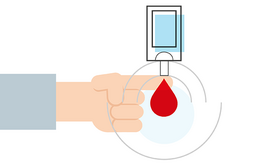The Costs of the Counterfeit Battle
Fighting counterfeit medicines is a noble goal, but the financial burden of safety features may affect access to medicines in unintended ways.
The implementation of Europe’s Falsified Medicines Directive (FMD) and its Delegated Regulation (1)(2), which provide detailed specifications of safety features, such as serialization, will provide an additional obstacle for counterfeiters. The implementation of the Directive aims to prevent falsified medicines from reaching patients and is in the interest of public health. However, the financial burden for manufacturers to implement these additional safety features – as well as the repository system that will allow the verification of authenticity of individual packs of medicine – could threaten the availability of medicines.
In practice, pharmaceutical manufacturers in Europe need to apply a unique identifier (a serialization number) and a tamper verification feature to the outer package of medicinal products. In addition, by February 2019, a European Medicines Verification System (EMVS) will guarantee the verification of medicines throughout the European supply chain and at the time of delivery to the patient. The Directive also specifies that the cost of the system will be funded by the manufacturers of medicinal products.
The scope of falsification and counterfeiting in other sectors (such as clothing and electronics) is proven to be a problem that is driven by price and demand. The same drivers have been identified in the health sector. For example, a Pfizer-sponsored study demonstrated that the counterfeit medicines market (which is almost exclusively via the Internet) is mainly dominated by so-called “lifestyle” medicines, such as well-known erectile dysfunction and weight loss products, followed by oncology and influenza (3)(4).
In the legal supply chain, there are very few problems of medicines being falsified. The prevalence of counterfeit medicines in the legal supply chain is only 0.005 percent (5)(6). In my view, using a medicines verification system to tackle this very low prevalence of falsified medicines in the supply chain is like using a sledgehammer to crack a nut.
Upgrading pharmaceutical packaging lines to apply serialization and tamper verification features will have a huge financial impact for the generic medicines industry. There are 10,000 packaging lines in efficient operation to supply European patients with generic medicines (7). Upgrading these lines to apply serialization and tamper verification features costs around 500,000 euros (~$580,000 USD) per packaging line (7). As the life-span of a packaging line is 5 years on average, the application of safety features adds a cost of 1 billion euros (~$1.17 billion) per year for generic medicines manufacturers. Each year in Europe, 10 billion packs of generic medicines are dispensed (6), the application of safety features on packaging adds 0.1 euros ($0.12) to the cost of goods per pack of generic medicines. In their impact assessment, the European Commission acknowledges that the financial impact of their legislation could be greatest for the generic medicines industry and for small and medium sized enterprises (SMEs).
At the same time, the industry is currently investing in the establishment of the EMVS, which will allow supply chain stakeholders to verify the authenticity of medicines. Here too, the FMD dictates that the repositories system shall be paid for by manufacturers of medicinal products. This system will need to be in place and operational by 9 February 2019. It will represent a further cost of around € 100 million (~$117 million) per year for medicine manufacturers.
Medicine manufacturers are concerned about these costs (which add to existing costs of meeting current regulatory requirements) – conversely, payers and health insurers are focused on lowering the prices of medicines. The widening gap will increase the likelihood of medicines being withdrawn from the market as the commercial viability of products is brought into question. Medicine shortages already seem to be occurring more frequently – and the root cause is no longer attributable only to manufacturing disruption, but also to economic issues.
Having said all that, a repositories system that verifies the authenticity of medicines could lead to more transparency in the supply chain, increasing predictability. Manufacturers would then be able manage their supplies more efficiently while addressing the needs of the market more precisely. So, will the system cause or help prevent medicines shortages? Time will tell.
- Official Journal of the European Union, “Directive 2011/62/Eu Of The European Parliament And Of The Council of 8 June 2011 amending Directive 2001/83/EC on the Community code relating to medicinal products for human use, as regards the prevention of the entry into the legal supply chain of falsified medicinal products” (2011). Available at: bit.ly/2k7CZyd. Accessed August 24, 2018.
- Official Journal of the European Union, “Commission Delegated Regulation (Eu) 2016/161 of 2 October 2015 supplementing Directive 2001/83/EC of the European Parliament and of the Council by laying down detailed rules for the safety features appearing on the packaging of medicinal products for human use” (2015). Available at: bit.ly/2kr127a. Accessed August 24, 2018.
- Nunwood survey data November 2009. Online consumer survey, participants 14,000 in 14 countries – available at: bit.ly/2O4eexF. Accessed August 30, 2018.
- World Health Organization, “Substandard and falsified medical products” (2018). Available at: bit.ly/2jhCnD8. Accessed August 24, 2018.
- MHRA, “Falsified Medical Products Strategy 2012-2015” (2012). Available at: bit.ly/2Ljt80U. Accessed August 24, 2018.
- European Commission, EC impact assessment accompanying the proposal for the Falsified Medicines Directive (2008). Available at: bit.ly/2NeNkmo. Accessed August 24, 2018.
- European Commission, EC impact assessment accompanying the proposal for the Delegated Regulation Supplementing Directive 2011/62/EU (2015). Available at: bit.ly/2MT3Qvy. Accessed August 24, 2018.
Maarten Van Baelen is Market Access Director at Medicines for Europe, Belgium.

















